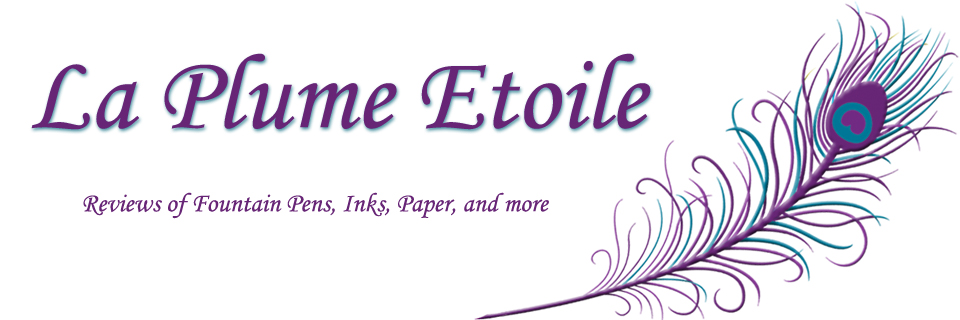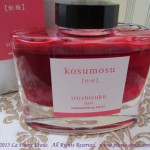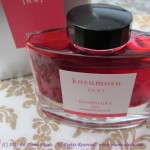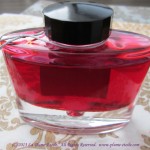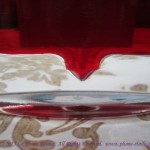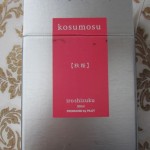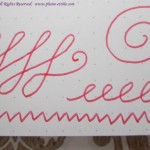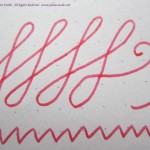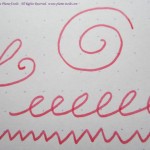It’s been a little while since I’ve posted a pen review, but I’m now happy to tell you about one of my new favorite pens, the Levenger True Writer in Obsidian.
Appearance: This is a nice looking pen! This True Writer (“TW”) is black with “silver” accents. I say “silver” because it is unclear from the product information whether the rings and clip are chrome or some other type of silver-colored metal. The cap is black with a “silver” contoured clip and ring and then pen also has a cap ring engraved with “Levenger” and “True Writer.” The body has another “silver” ring at the bottom and both the cap and bottom end of the pen have black jewels to match the body. The section is also black. The photo on the pen’s product page makes the black look more matte, but it’s actually very glossy.
Body: The pen measures 5 1/2″ in length, 5/8″ diameter and weighs 0.77 oz.
I normally prefer thinner/medium pens over fat pens, and upon first use I felt the body/section was a little too wide. However, after using the TW for only a few minutes I got used to the the width and now I barely notice it — even after switching between the TW and thinner pens. It’s actually nice to have a bit of a fatter pen on certain days as it is quite comfortable to hold and use.
Nib: Levenger nibs (this one included) are stainless steel and interchangable. I requested a fine nib for this pen, but was sent a medium. I was initially disappointed at this oversight, but upon first test my disappointment turned to pleasant surprise as this particular medium is on the fine side of medium and is actually just about the width for which I was hoping. Levenger nibs have a tendency to be inconsistent in their widths, meaning some fines are finer than others, some mediums are more fine or more broad, etc. It really just depends on which nib you get. The nibs unscrew at the bottom of the section and thus can be exchanged with any other Levenger nib. I had a slight problem with the converter/section/nib combo where the nib started unscrewing on its own and the ink leaked onto my fingers. However, once I tightened it all was well again.
On first test the nib also seemed really stiff, however, I flexed it a little to spread the tines and after that the nib has been springy and very comfortable to use.
Caution: be careful if you flex the tines on your Levenger nib because these nibs are not flex nibs.
Performance: Some TW users recommend cleaning or soaking the nib to remove any factory oils that may be present, but I decided to try it as is and see how it performed. The flow was great from the first touch of nib to paper and the nib was perfectly smooth. I filled the converter only part way the first time, and the nib started drying out close to the end of the ink reservoir, but before the pen was actually out of ink. Concerned, I filled it again so it was full and while I did have one more dry nib issue, it has been performing reliably since then.
This pen comes with one mini-cartridge and one converter. I chose to use the converter so I could pick my ink of choice. I initially inked the TW with Iroshizuku Ku-Jaku (review forthcoming) and they have been great friends. The flow is wet, although I think that is due to both the pen and the ink, as Ku-Jaku tends to have excellent flow.
Overall: The Levenger TW is now one of my new favorite pens, and definitely my favorite modern pen so far. It is visually sleek, well-balanced, comfortable to use, and reliable. I would definitely recommend this pen.
However, I did have some problems with the Levenger employees/customer service reps. I had called the company’s toll-free number for some information and both people I spoke to were extremely rude to me and refused to answer my questions. For that reason I am hesitant to support the Levenger company itself with my hard-earned money. I found this to be unfortunate, as it seems they make good products and I was hoping to become a regular Levenger customer.
***UPDATE 4/7/14**** I was contacted by Levenger’s Director of Marketing to find out about my bad customer service experience. He was quite apologetic and the company has already taken steps to handle the conduct of the employees. It seems my experience was rare and now I feel much more comfortable endorsing Levenger’s commitment to excellent customer service. The company really does care about their products and reputation, so I am glad this situation was corrected. I am happy to continue to support Levenger and will bring you more reviews of Levenger products in the future.
Price: The pen retails for $59 on Levenger.com. Also available on Amazon – medium nib here and fine nib here.
Here’s a bonus box shot for those of you who love the boxes!
